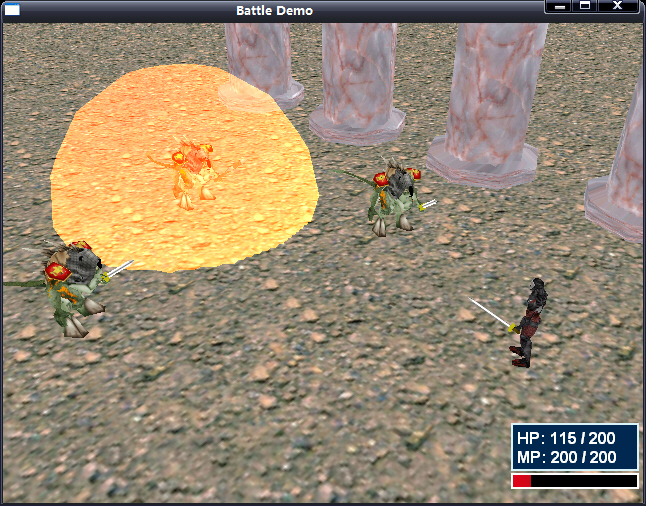With swords swinging and magic
blasting, you manage to wade through wave
after wave of demonic creatures. With every victory, you feel yourself growing
stronger; new spells are learned, and stronger weapons are usable. The enemy
is beginning to lose ground, and here you are standing tall on the mountain you
created.
That is, until you encounter
the Red Dragon that has been razing the countryside.
All your hard work comes crashing down in the ten seconds it takes for the huge
beast to turn you into small, charred chunks of flesh.
Ah, but what fun it is—the
power and exhilaration you feel from beating down
countless evildoers, and the agony of defeat that comes from the hands, or in
this
case the claws, of stronger foes. Awesome combat sequences make some games
what they are (or at least the sequences boost the fun of playing the games).
Now
is your chance to add combat sequences to your game.
Designing
External Combat Sequences
Some of my fondest memories of
role-playing games are those of combat. Not just
any type of combat, mind you. I’m talking about those incredible combat
sequences
that pit you against evil hordes in close-quarter strategic warfare. If you’ve
ever
played Final Fantasy 7, you know the kind of combat sequences I’m referring to.
Games such as Final Fantasy 7
take combat in a whole different direction. Rather than
battling it out in real time, Final Fantasy 7 switches to an external battle
sequence screen in
which the view is much closer to the action. Following snap shows a typical
external
combat sequence game.

External combat sequences
generally follow similar designs and patterns. First, you have the arena,
which is the area representing a small section of the level on which the
characters are fighting. The
characters are spread around the arena—players on the right, monsters on the
left.
Each character has an
associated timer (the charge timer) tracking how often the character
can perform an action. This timer slowly increases until it tops off at maximum,
at which point the
character can decide which action to perform. No more hand-twitching,
button-pounding combat
here—just deliberate, decisive selections.
NOTE
External combat sequence means that the combat sequence is separated
from the game’s navigation sequences. For example, a player walking within
a level enters combat, and the game-play, in turn, switches to a combat sequence
screen.
Once an action and the action’s
victim are selected, the characters slowly carry out the
results. When casting spells, the characters perform long, mundane rituals that
bring
forth amazing spells and graphical effects. Whenever a character attacks another
character,
the two quickly engage, regardless of their distance from each other.
After a character completes an
action, the character’s charge timer is reset, and the
character must once again wait for it to be fully charged before performing
another action. Combat continues in the same manner as previously described
until all monsters or players are dead (or the PC runs away).
Once combat is complete, the
combat sequence engine divides the booty, and
the regular game-play continues (until the next combat sequence that is). Of
course, this style of combat proceeds more
slowly than real-time combat, but all in all, it’s worth the wait.
NOTE
Most actions require the player to have a fully charged timer in order
to perform the action, such as using items, equipping new weapons and
armor, attacking, and using spells.